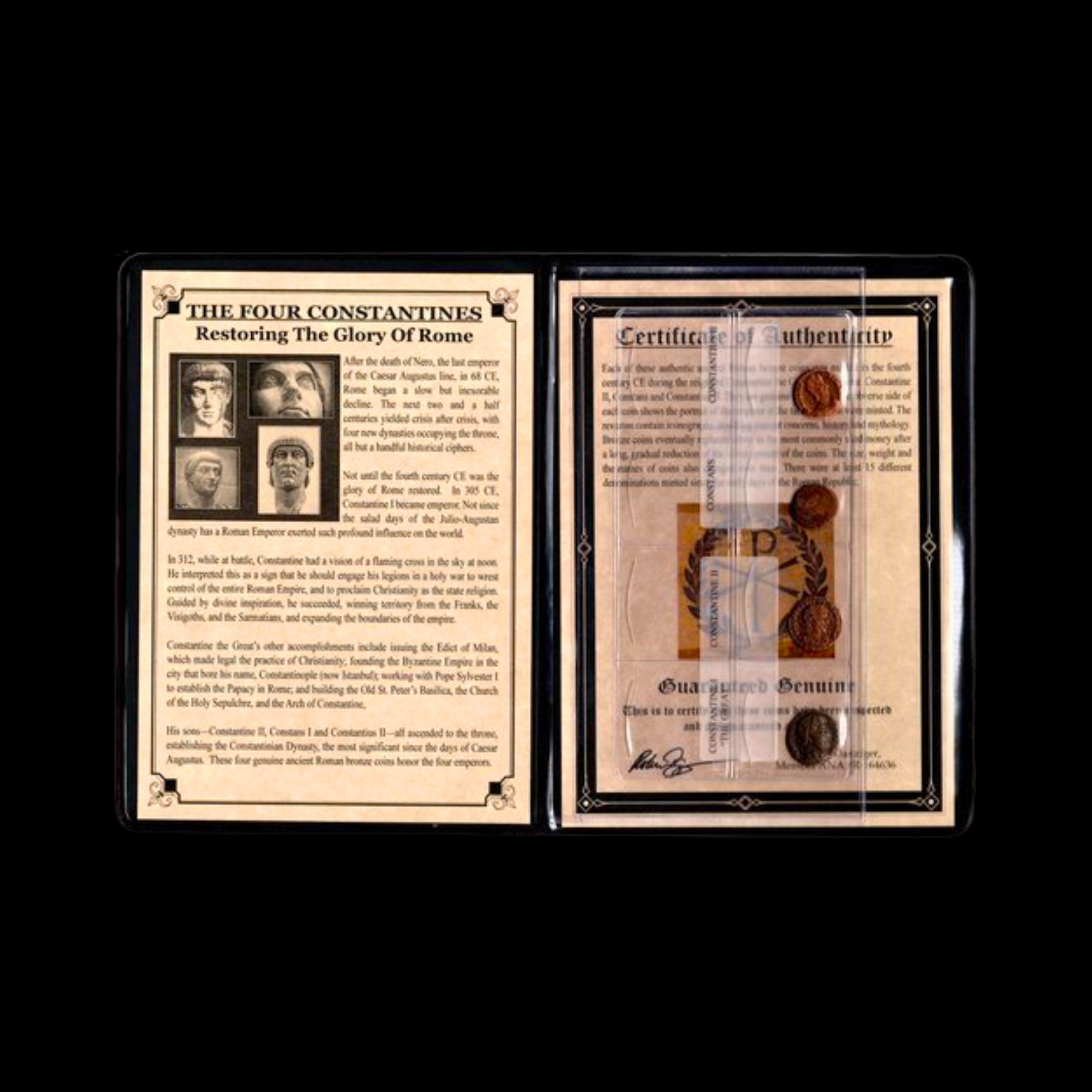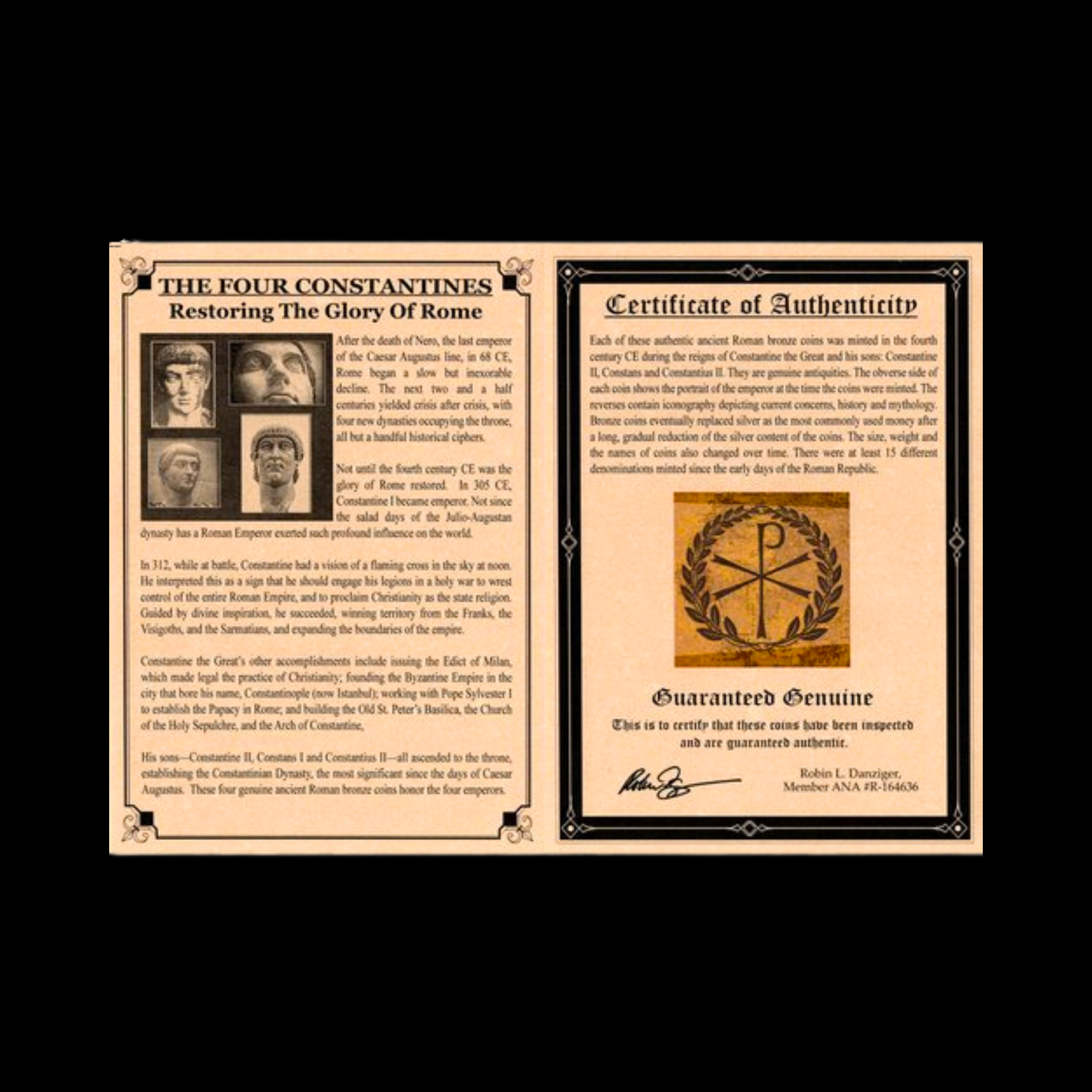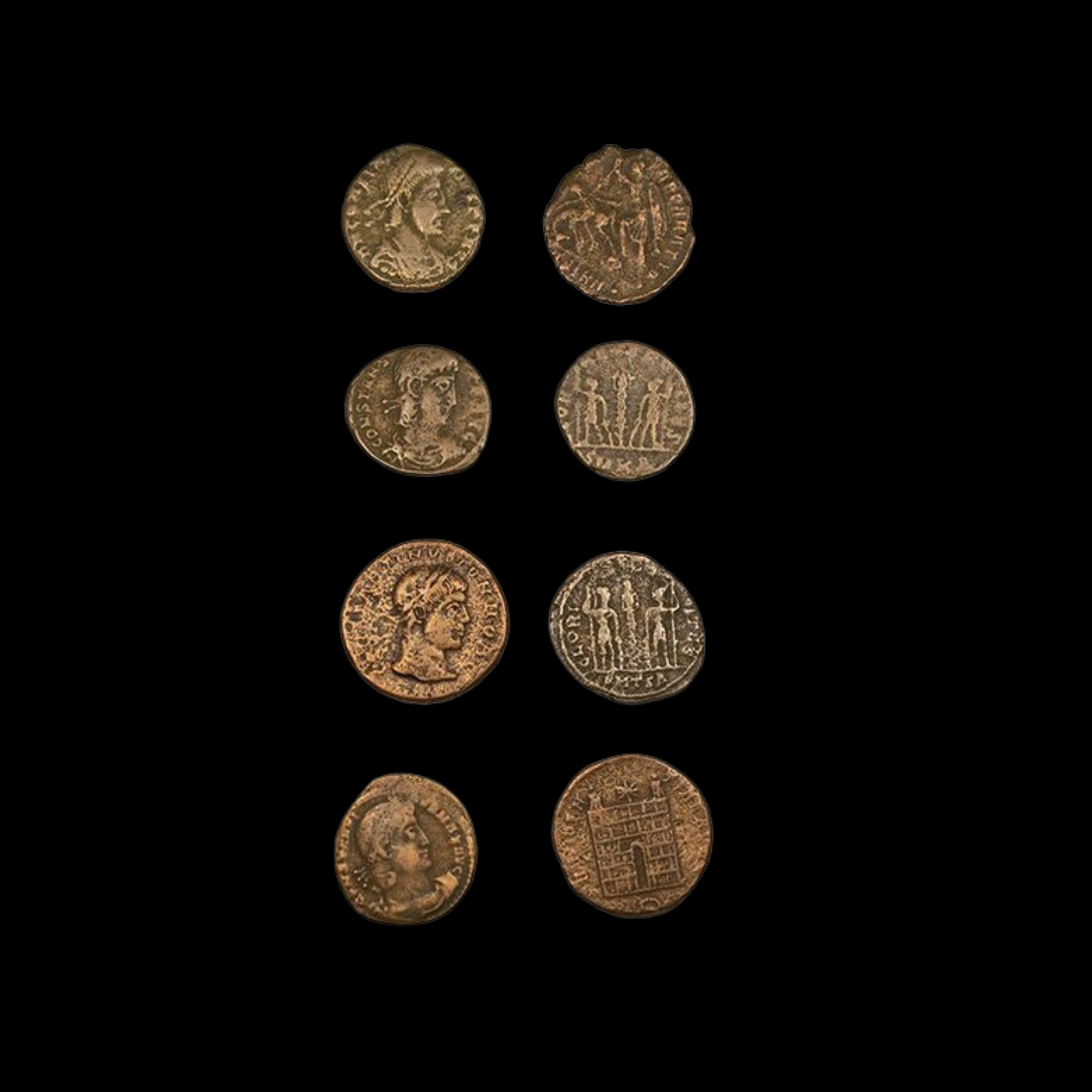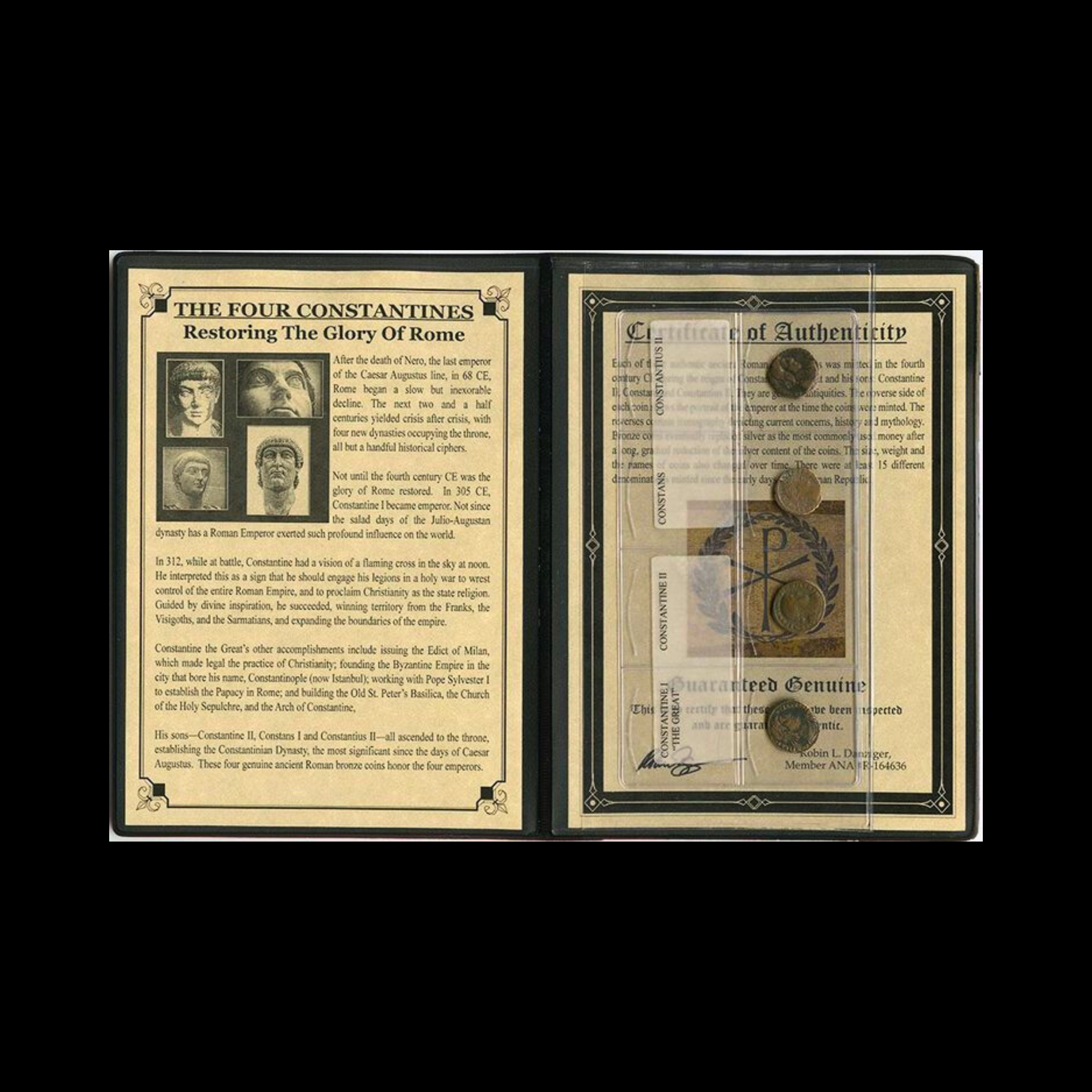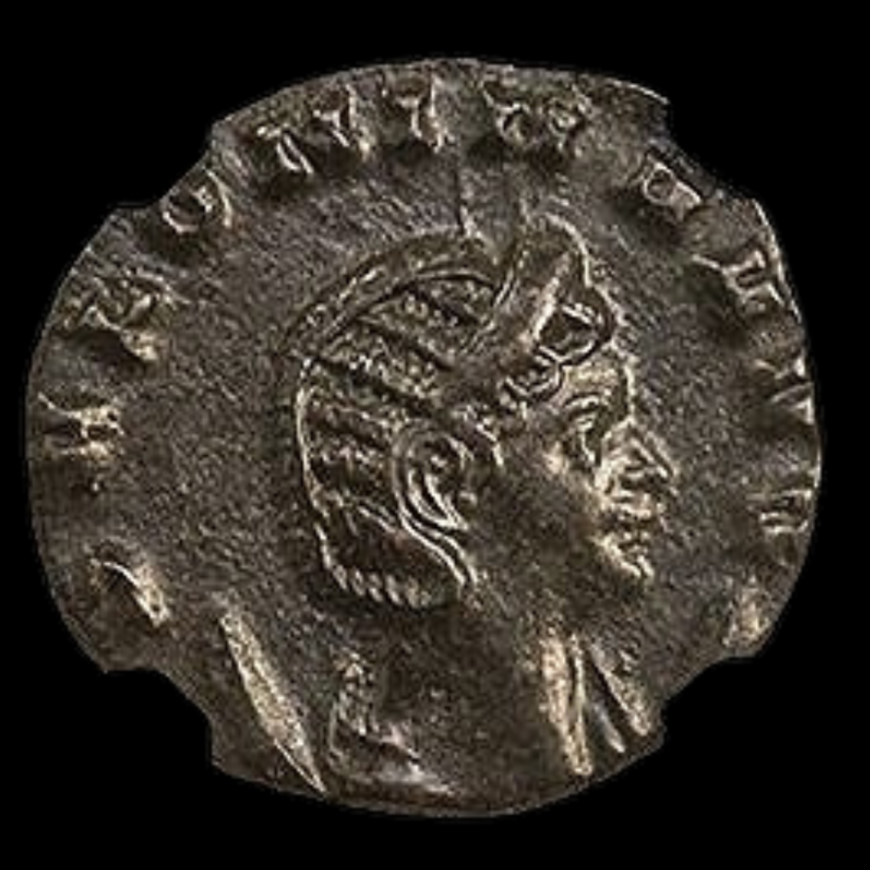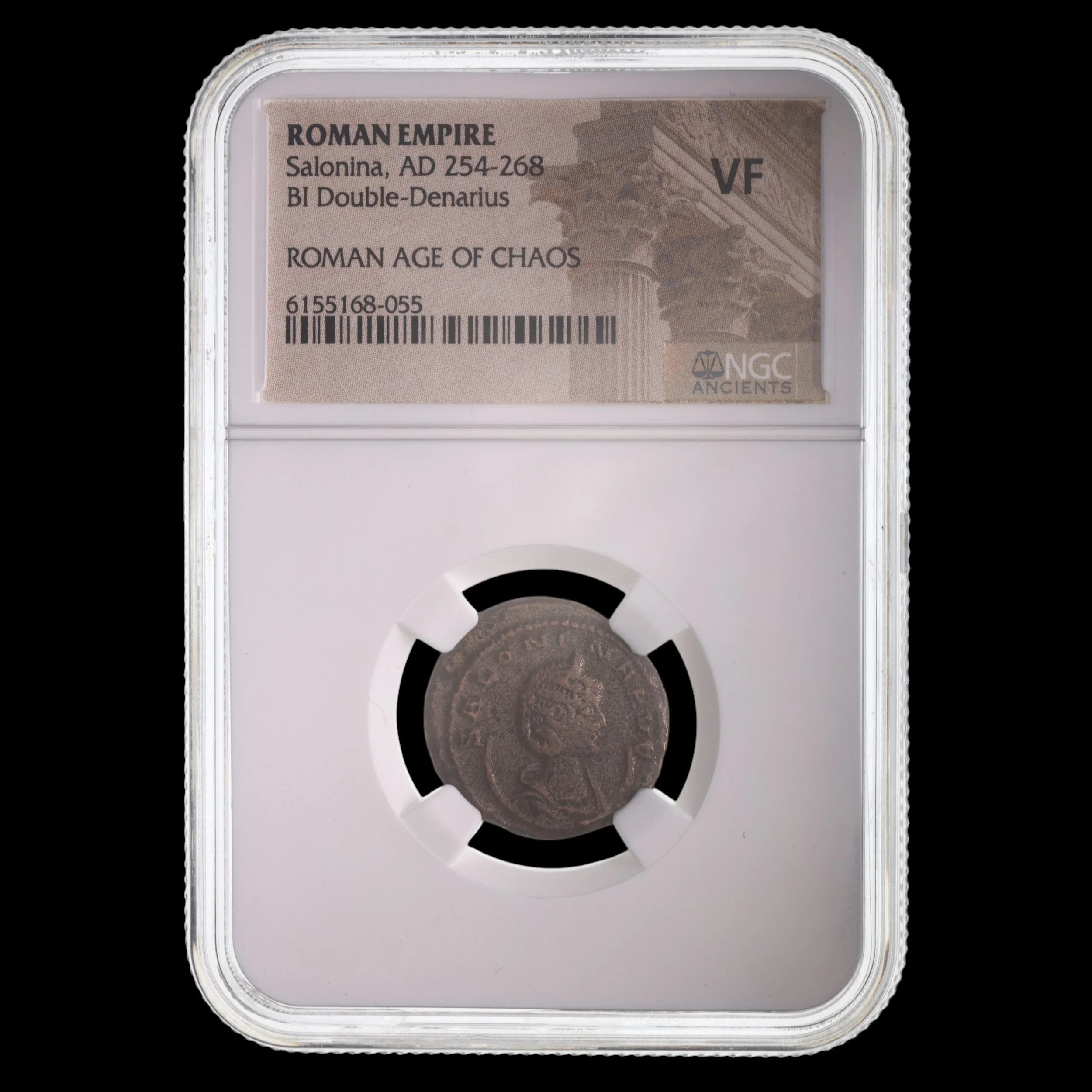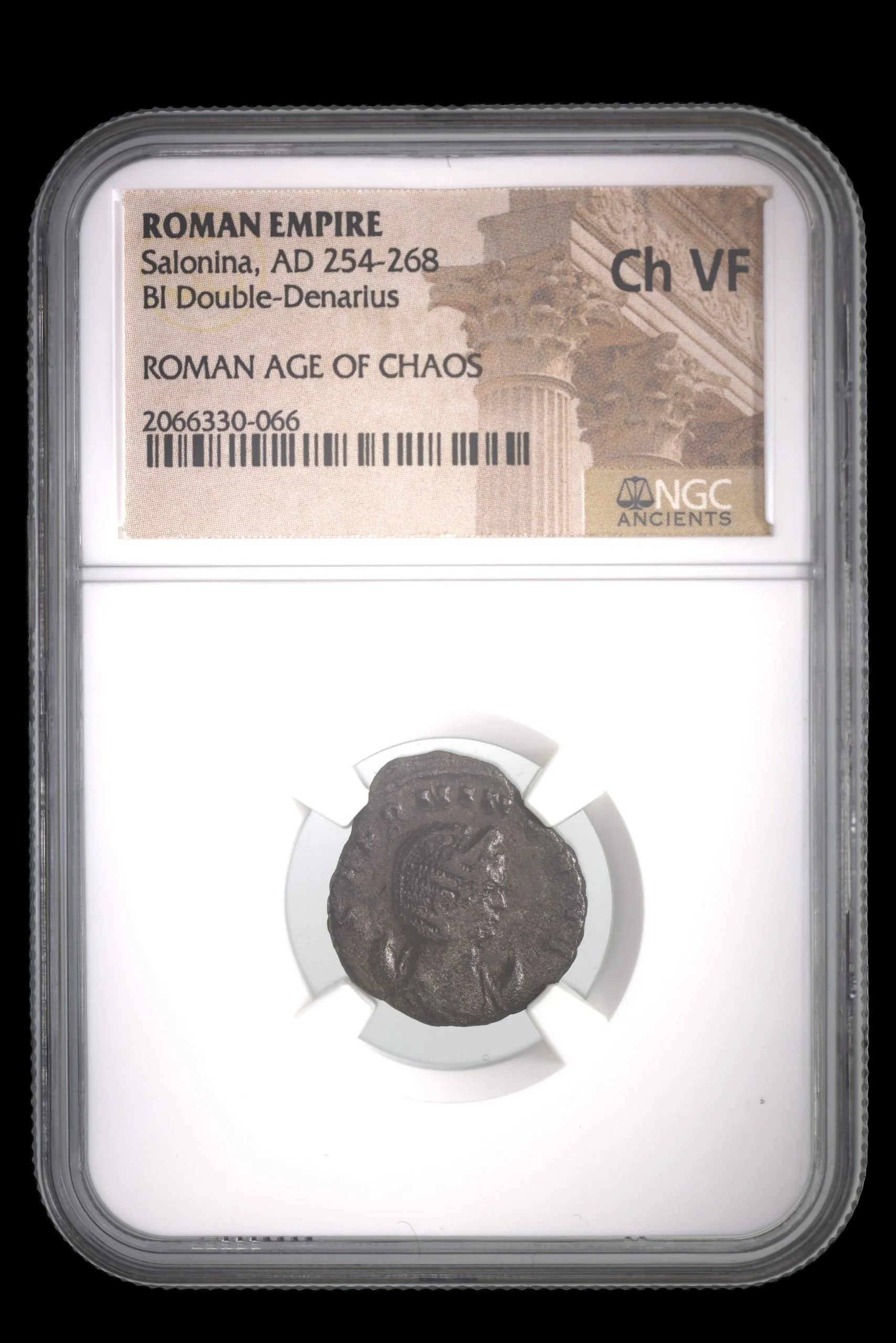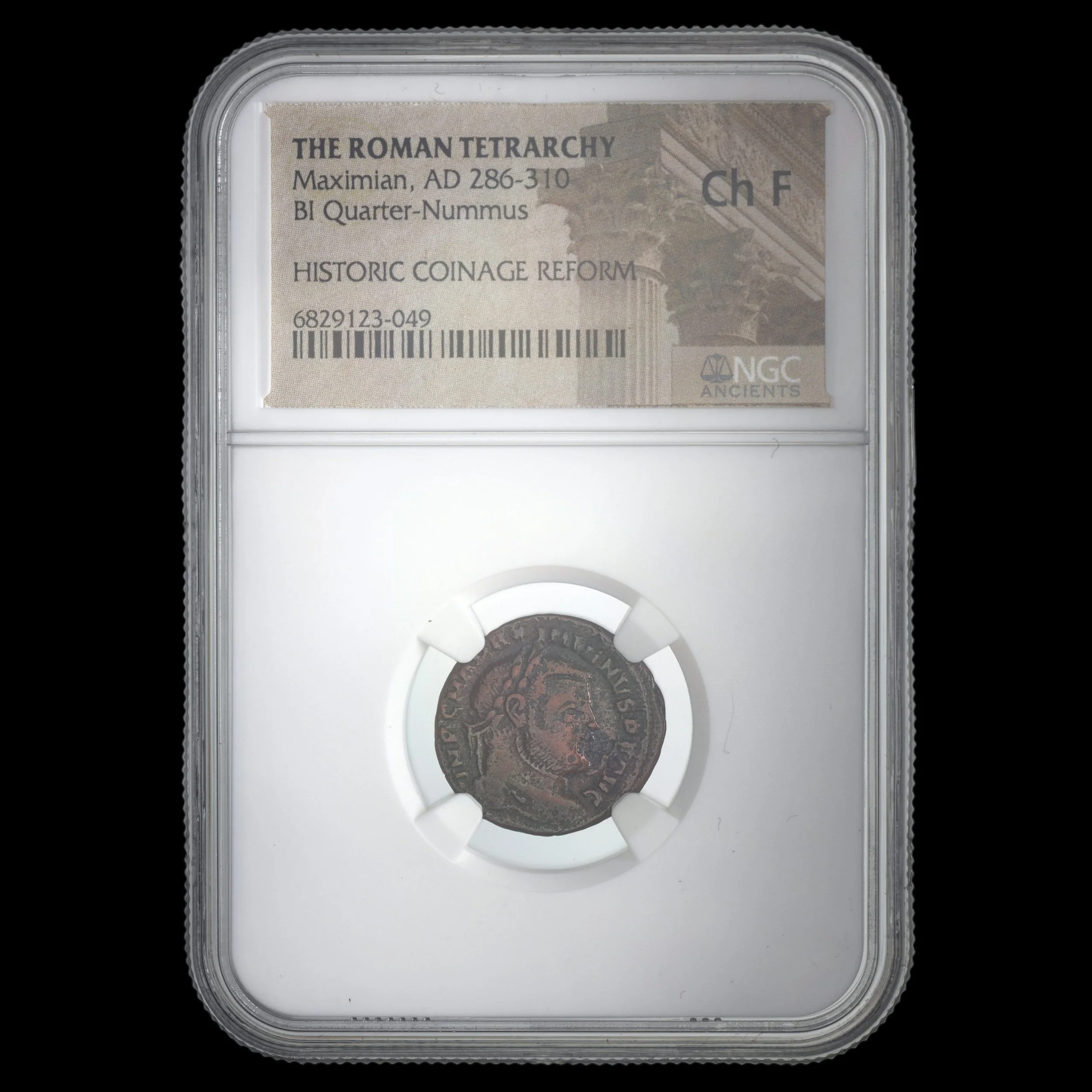 Image 1 of 6
Image 1 of 6

 Image 2 of 6
Image 2 of 6

 Image 3 of 6
Image 3 of 6

 Image 4 of 6
Image 4 of 6

 Image 5 of 6
Image 5 of 6

 Image 6 of 6
Image 6 of 6







Roman Antoninianus of Carus (about 1,740 years ago)
The coins shown are representative examples of the grade and type, but not the actual specimens for sale. For details on NGC’s grading standards and definitions, please refer to our NGC Grading page.
This is a silver-washed bronze coin (antoninianus) featuring Emperor Carus, who ruled briefly during a turbulent period of Roman history marked by military upheaval and frequent changes in leadership.
Coin Description:
Front side: Portrait of Emperor Carus, typically wearing a radiate crown symbolizing imperial authority
Back side: Likely features Roman deities, personifications of virtues, or military symbols
Technical Details:
Antoninianus denomination (a common currency unit of this period)
Certified by NGC (Numismatic Guaranty Corporation)
Minted during 282-283 CE
Historical Significance: Carus succeeded Emperor Probus as ruler of Rome, continuing the tradition of soldier-emperors who rose through military ranks. His reign was notably brief, lasting only about 16 months. Despite this short tenure, Carus achieved military success, particularly in campaigns against the Persians in the east. His death reportedly occurred during a thunderstorm while on campaign, with some ancient sources suggesting he was struck by lightning—viewed by some as divine punishment for crossing into Persian territory. Carus represents an important transitional figure during the Crisis of the Third Century, when Rome experienced significant political instability and the empire was repeatedly divided and reunited under various military commanders.
The coins shown are representative examples of the grade and type, but not the actual specimens for sale. For details on NGC’s grading standards and definitions, please refer to our NGC Grading page.
This is a silver-washed bronze coin (antoninianus) featuring Emperor Carus, who ruled briefly during a turbulent period of Roman history marked by military upheaval and frequent changes in leadership.
Coin Description:
Front side: Portrait of Emperor Carus, typically wearing a radiate crown symbolizing imperial authority
Back side: Likely features Roman deities, personifications of virtues, or military symbols
Technical Details:
Antoninianus denomination (a common currency unit of this period)
Certified by NGC (Numismatic Guaranty Corporation)
Minted during 282-283 CE
Historical Significance: Carus succeeded Emperor Probus as ruler of Rome, continuing the tradition of soldier-emperors who rose through military ranks. His reign was notably brief, lasting only about 16 months. Despite this short tenure, Carus achieved military success, particularly in campaigns against the Persians in the east. His death reportedly occurred during a thunderstorm while on campaign, with some ancient sources suggesting he was struck by lightning—viewed by some as divine punishment for crossing into Persian territory. Carus represents an important transitional figure during the Crisis of the Third Century, when Rome experienced significant political instability and the empire was repeatedly divided and reunited under various military commanders.






